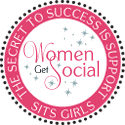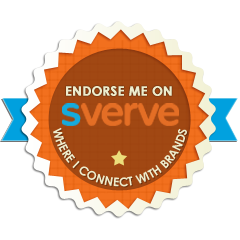Did you know you can block other users on Pinterest now? I found out by chance when Pinterest started rolling out "Related Pins" amidst the regular feed. You know - the pins that are from people you don't follow at all. Simply suggestions based on other things you typically pin or like.
I get the need to slip in an ad and make a little money for a service that is totally free to me, but I also don't want to see all of them. Specifically, there is a big box store where I don't shop and I don't want to see their pins, ads or otherwise which led me to finding out how to block them.
Whether it's a store, other business or perhaps a stranger that rubs you the wrong way - here are the quick steps to blocking on Pinterest:
1) Go to the profile for the user you want to block. Click the flag icon. At bottom of drop down menu, click "block."
2) A pop-up window will double check that you want to block this user. Click "Block Pinner" to continue. A second pop-up window will confirm you have now blocked the user. Click "ok" to finish.
3) Any profile of a user you have blocked will show "Unblock" instead of the "Follow All" button. An easy way to double check you have blocked them and, if you made a mistake or change your mind, just click it to unblock.
Really, it was that easy and you no longer have any interaction from the blocked user. Happy pinning!
I get the need to slip in an ad and make a little money for a service that is totally free to me, but I also don't want to see all of them. Specifically, there is a big box store where I don't shop and I don't want to see their pins, ads or otherwise which led me to finding out how to block them.
Whether it's a store, other business or perhaps a stranger that rubs you the wrong way - here are the quick steps to blocking on Pinterest:
1) Go to the profile for the user you want to block. Click the flag icon. At bottom of drop down menu, click "block."
2) A pop-up window will double check that you want to block this user. Click "Block Pinner" to continue. A second pop-up window will confirm you have now blocked the user. Click "ok" to finish.
3) Any profile of a user you have blocked will show "Unblock" instead of the "Follow All" button. An easy way to double check you have blocked them and, if you made a mistake or change your mind, just click it to unblock.
Really, it was that easy and you no longer have any interaction from the blocked user. Happy pinning!














































































